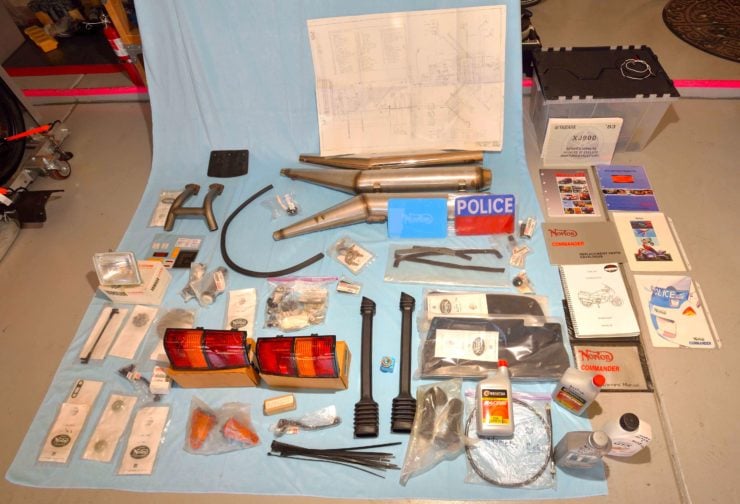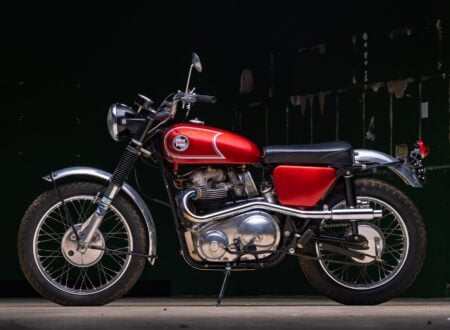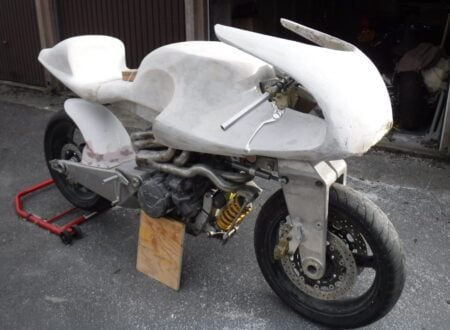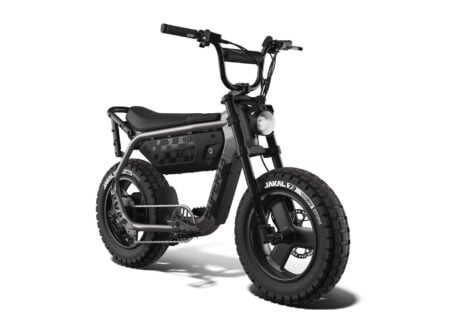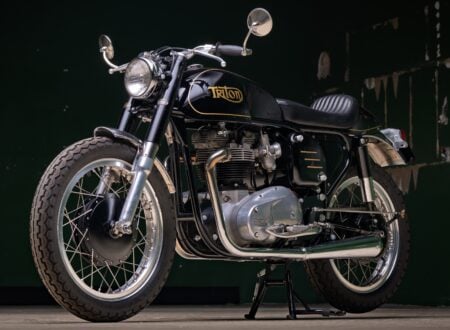This is one of the original Norton Commander P52s from the 1980s, it’s an exceptionally rare motorcycle with just 253 PS2 models made in total. They were developed for use by the police, and this one was sent to Dubai where it was evaluated by the Dubai Police Force.
The Commander is powered by a 588cc twin rotor, liquid-cooled Wankel rotary engine that produces 85 bhp at 9,000. At the time of its release the bike was lauded in period reviews for its power and smooth operation, but its high price and lack of dealership support hampered sales.
Fast Facts – The Norton Commander
- The Norton Commander was released in 1988 and built until 1992. The production run was separated into two lots, the P52 bikes that had a single seat and were for police use, and the P53 which had two seats and was intended for civilian touring use.
- The Commander was the successor to the earlier Norton Interpol 2, unlike the air-cooled Interpol the Commander had a liquid-cooled engine which offered more power and better reliability.
- With its full fairings and built-in pannier cases the Commander was ideal for touring, and many owners used it in this capacity, some still do.
- The twin rotor Wankel engine makes 85 bhp at 9,000 rpm, enough for a top speed of 125 mph and a cruising speed of 100 mph – only on the autobahn of course.
The Great Wankel Gamble
In the early 1970s the British motorcycle industry was starting to realize it was losing out to the Japanese, with their advanced new motorcycle designs and low pricing. Countless research projects were launched to leapfrog the Japanese designs, one of which was led by an engineer named David Garside at BSA’s Umberslade Hall research facility.
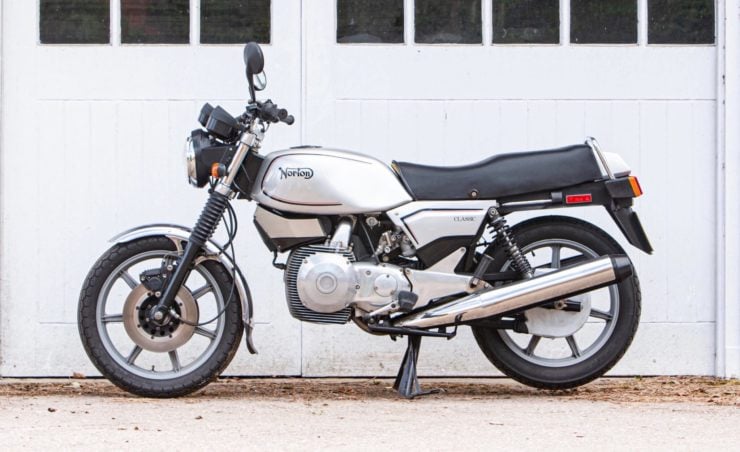

Garside had been enthralled by the air-cooled, single-rotor Fichtel & Sachs Wankel rotary engine used in the Hercules W2000 motorcycle, and he realized it could provide the technological leap forward that the British motorcycle industry so deeply needed.
He quickly developed a working BSA prototype based on the Fichtel & Sachs engine to show it to the board of directors. Though it was underpowered it showed great promise, in no small part due to the small size, simplicity, and low weight of the engine.
The next step involved Garside and his team developing a twin-rotor version of the engine, in order to keep costs low he just used two Fichtel & Sachs rotors and built the engine engine around them. Power essentially doubled and the prototypes were showing much promise.
Ultimately the BSA rotary motorcycle would never see production. The early 1970s were a period of mergers in the British motorcycle world, often in the hopes of staving off bankruptcy or bringing in new financing.
As a result of all this the final version of the Garside engine was first used in a production motorcycle in 1987 – the Norton Classic. Apart from the engine the rest of the motorcycle was relatively standard, with twin shock absorbers in the rear, telescopic forks up front, and a tubular steel frame.
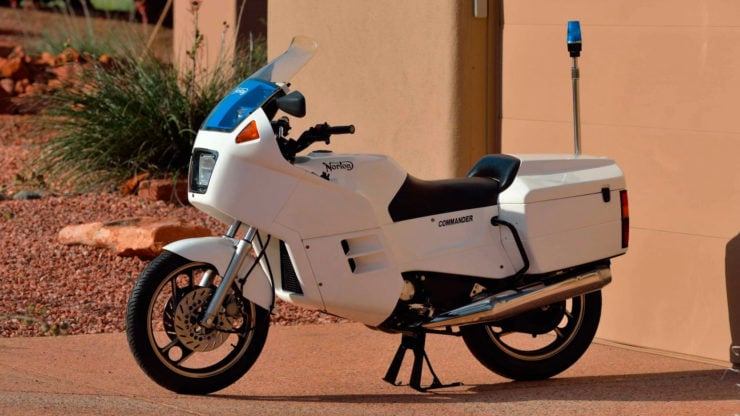

Just 100 examples of the Classic were made, it was succeeded by the Norton Interpol 2 which used a variation of the same engine but was only available to government and commercial buyers – it was targeted mainly at police forces.
After the Interpol 2, the Norton Commander was released. The Commander took many of the lessons learned on the Interpol 2 and the two bikes do look similar, but under the skin the Commander is far more advanced.
The Norton Commander
When it was released in 1988 the Norton Commander represented almost 20 years of rotary engine development. The earlier air-cooled engines were now replaced with a more advanced liquid-cooled design and thanks to the almost vibration-free operation of the Wankel engine the Commander was almost impossibly smooth even up at higher revs.
With its full fairing and integrated pannier cases Norton was targeting the Commander at both the police and civilian motorcycle touring markets. The P52 had a single seat and was meant for law enforcement and the P53 had a twin seat for civilian use.
Later versions of the P53 were given detachable Krauser K2 panniers, to allow touring motorcyclists to bring them inside with them when camping or staying in hotels/motels for security.
Norton was no longer the industrial juggernaut it had been just a couple of decades earlier, so many parts needed to be bought in from outside suppliers including the wheels, forks, switchgear, clock, and brakes which were all sourced from the Yamaha XJ900.
With a top speed of 125 mph (201 km/h) the Commander was quick by the standards of the time and period reviews of the bike were largely positive. The two biggest issues were the fact that it was priced 25% above the nearest competition – the BMW K100LT – and that Norton had no dealership network, so servicing could only be done at the factory.
Production would end in 1992 with just ~300 made. Surviving examples are now prized by collectors, though they remain largely unknown in the USA as they were never officially exported there.
The 1989 Norton Commander Shown Here
The Norton Commander you see here is a special example of an already rare motorcycle, it was shipped to Dubai for testing as a police bike, and it still carries its original police livery, siren, and lights.
It now has just 1,151 miles on the odometer and it’s being offered for sale with documents in Arabic from Dubai, original factory brochures, lots of extras and ad materials, a large number of extra parts (pictured above), a factory service manual, and it’s listed as being serviced and running properly.
If you’d like to read more about it or register to bid you can visit the listing here. It’s due to cross the auction block with Mecum in Las Vegas in late January.
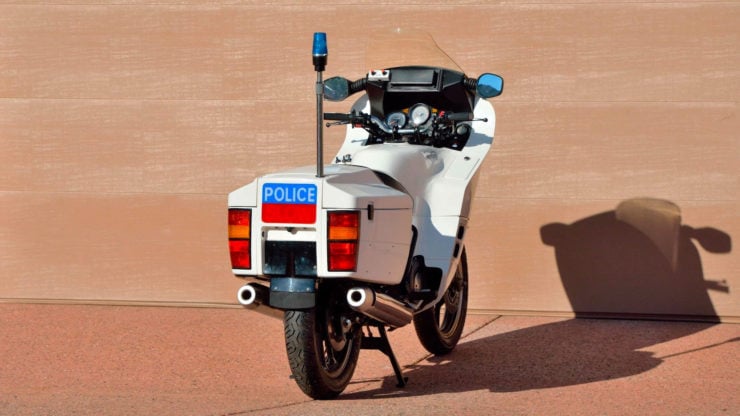
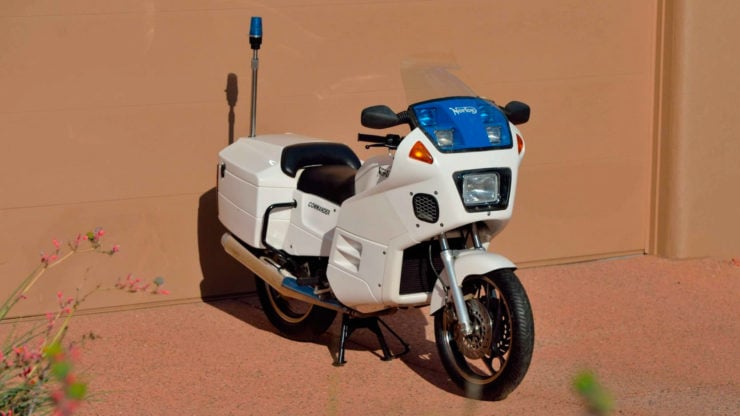
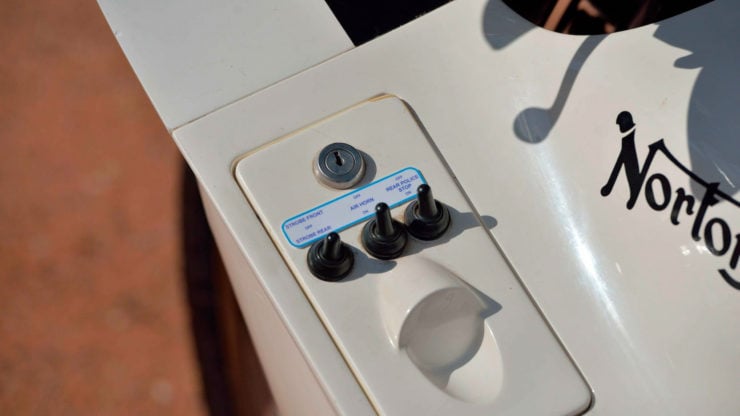
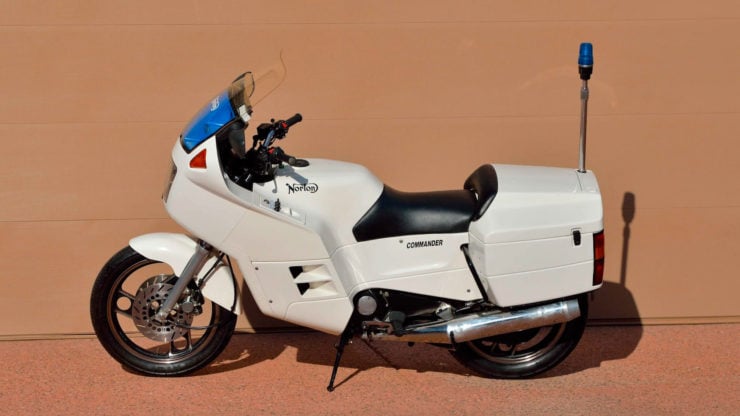
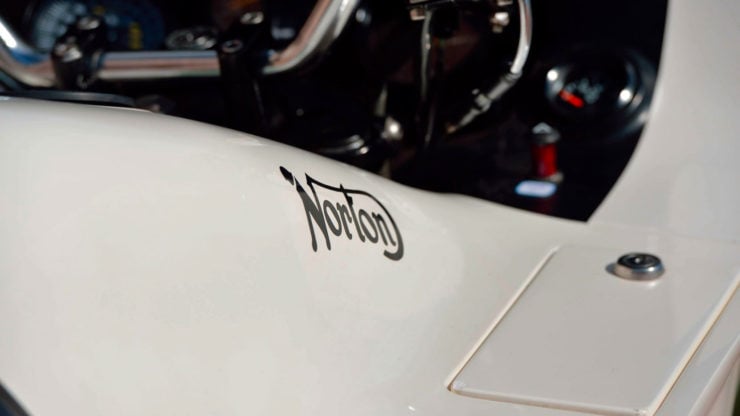

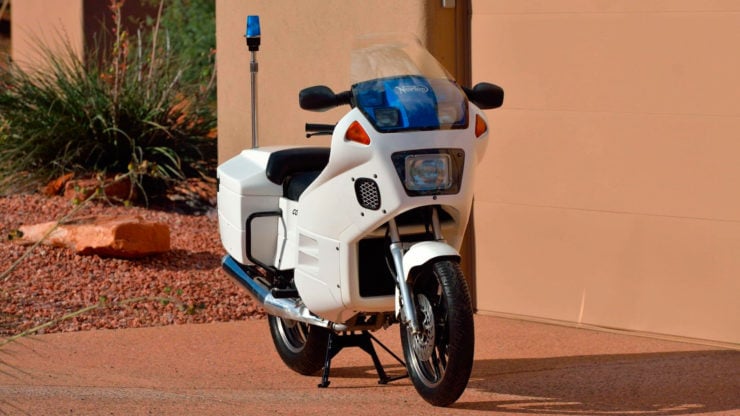

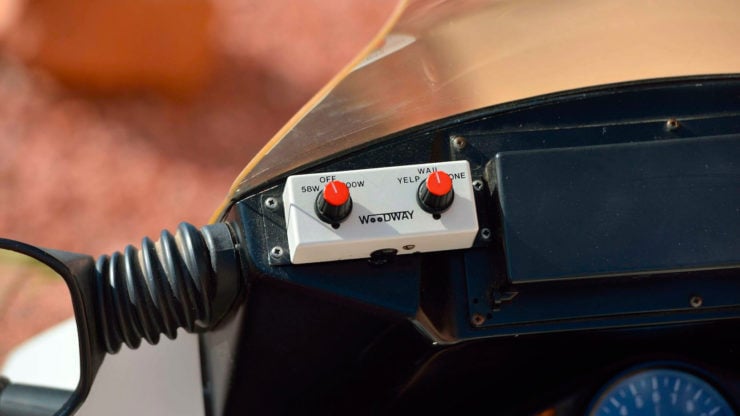
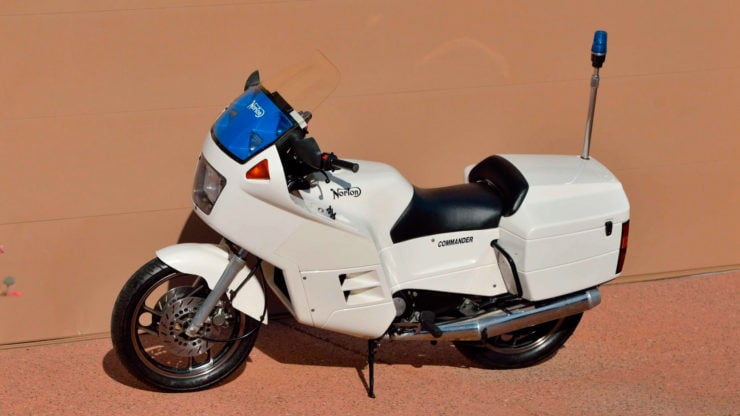
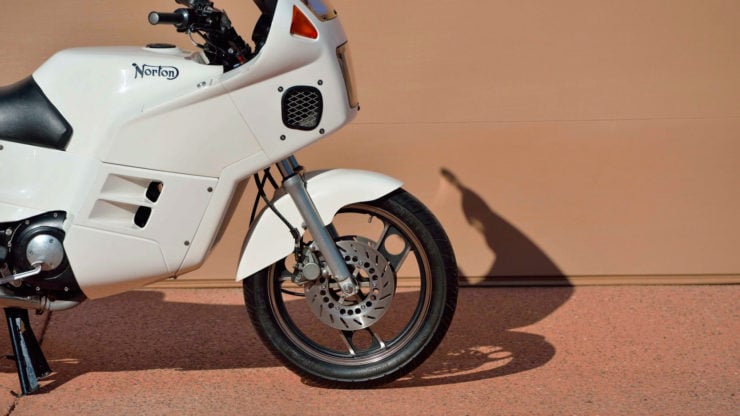
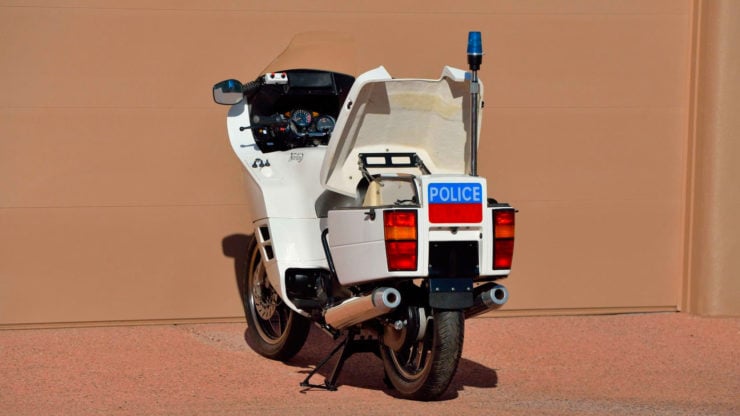
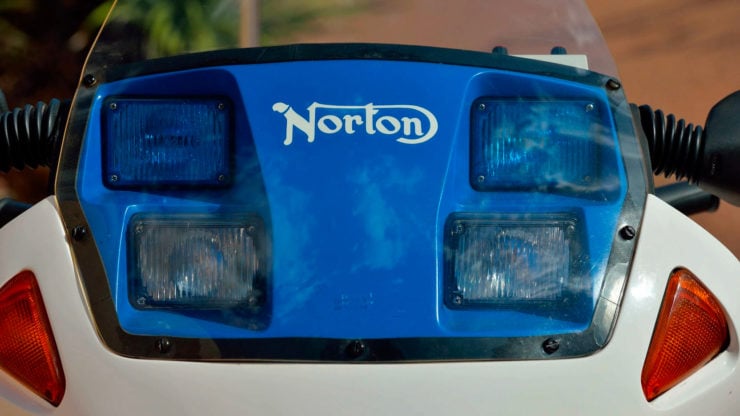
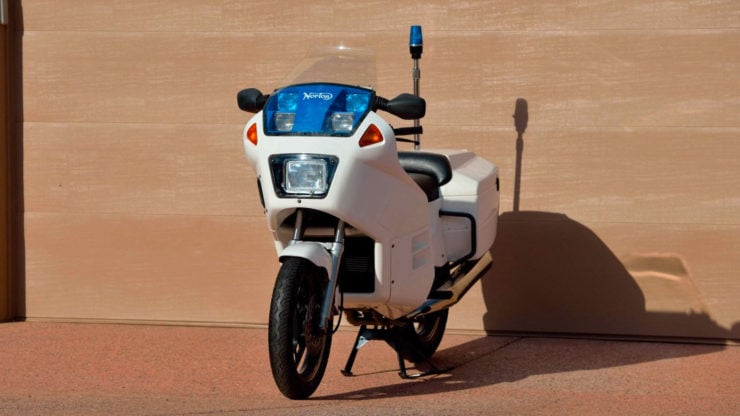
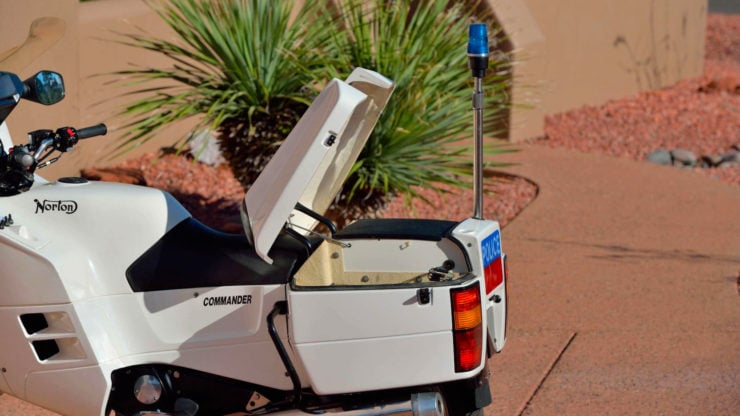
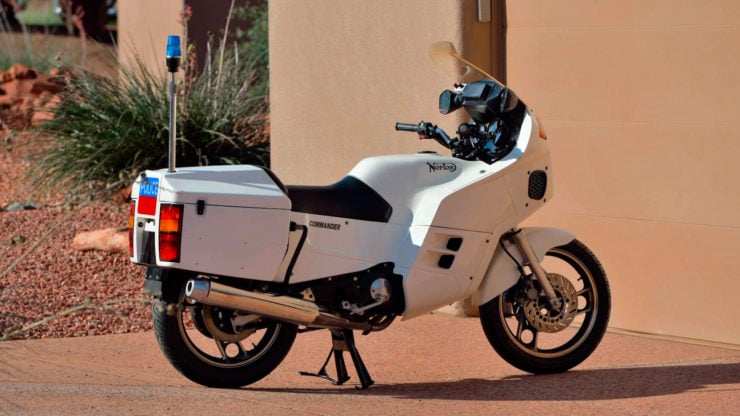
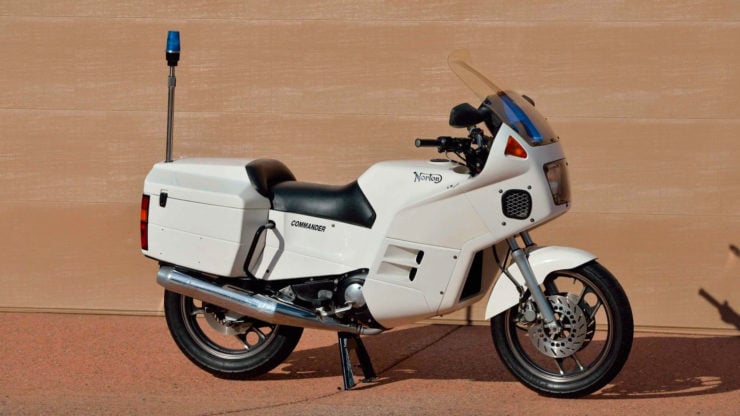
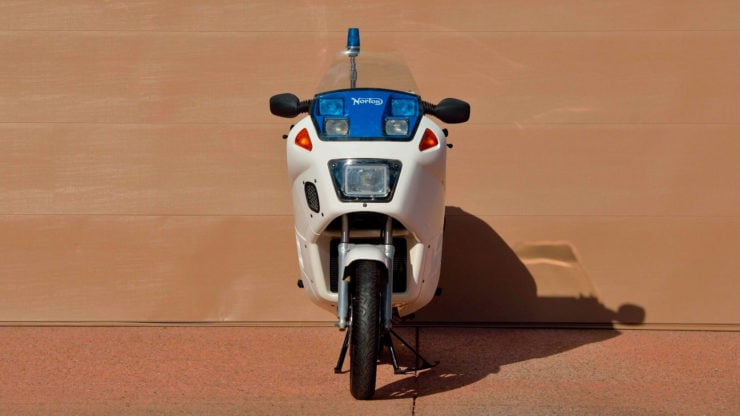
Images courtesy of Mecum


